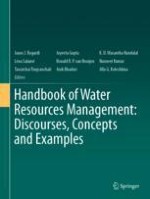2021 | OriginalPaper | Chapter
7. Water Discourses
Authors : Léna Salamé, Daene C. McKinney, Jerome Delli Priscoli, Toshio Koike, Jack Moss, Mara Tignino, Owen McIntyre, Hussam Hussein, Mahsa Motlagh, Aaron T. Wolf, Lynette de Silva, Natasha Carmi, Danilo Türk, François Münger
Published in: Handbook of Water Resources Management: Discourses, Concepts and Examples
Publisher: Springer International Publishing
Activate our intelligent search to find suitable subject content or patents.
Select sections of text to find matching patents with Artificial Intelligence. powered by
Select sections of text to find additional relevant content using AI-assisted search. powered by
